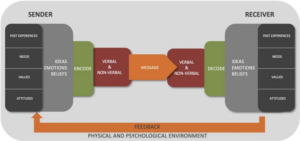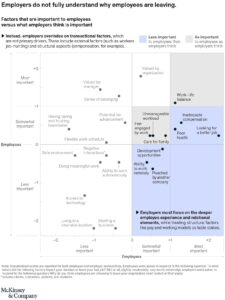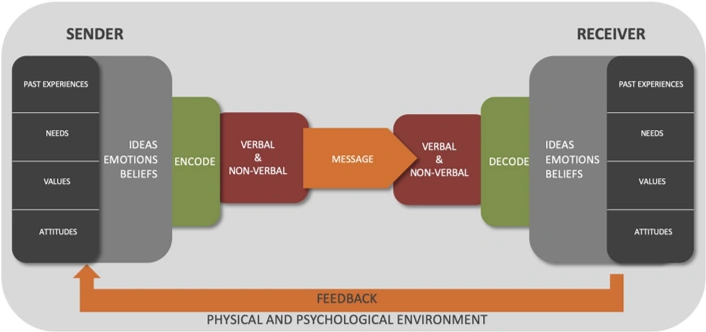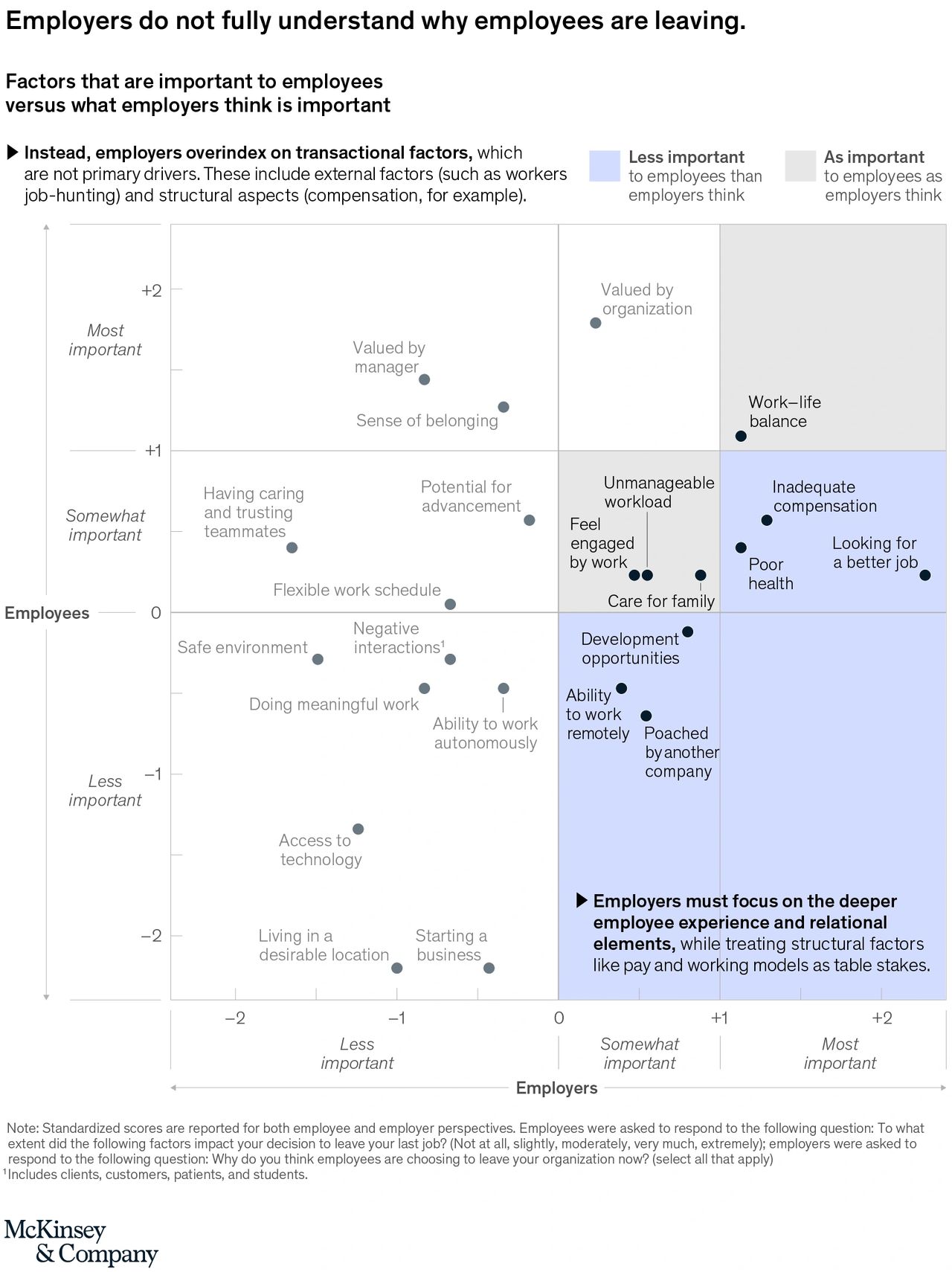Humanistic Leadership

In today’s fast-paced and ever-evolving business landscape, traditional leadership models are being increasingly scrutinized and often found lacking. The newer generation of employees is not just looking for a paycheck; they seek meaningful work, inclusive environments, and leaders who genuinely care about their well-being. Enter humanistic leadership, a transformative approach that places the individual at the heart of leadership.
What is Humanistic Leadership?
Humanistic leadership is a leadership style that prioritizes the value and dignity of each individual within an organization. Rooted in principles of empathy, ethical decision-making, and a deep understanding of human motivations, humanistic leaders strive to create a supportive and inclusive workplace culture. This approach emphasizes the holistic development of team members, fostering an environment where everyone feels valued, empowered, and motivated to contribute their best.
Key elements of humanistic leadership include:
- Empathy and Compassion: Understanding and addressing the needs, feelings, and perspectives of employees.
- Ethical Decision-Making: Making choices that are fair, just, and respect all stakeholders.
- Individual Development: Encouraging the growth and personal development of each team member.
- Inclusivity and Collaboration: Creating an environment that values diverse opinions and fosters teamwork.
- Trust and Transparency: Building trust through open communication and honesty.
- Empowerment: Giving employees autonomy and a sense of ownership in their work.
- Purpose-Driven Leadership: Aligning organizational goals with a meaningful purpose.
- Holistic Well-Being: Attending to the overall well-being of employees, including their mental, emotional, and physical health.
Why is Humanistic Leadership Important for Modern Leaders?
The importance of humanistic leadership in today’s workforce cannot be overstated. Here are several reasons why this approach is crucial for modern leaders:
- Meeting Employee Expectations: According to a 2020 Gallup report, 64% of millennials and 72% of Gen Zers say that the quality of their managers and the organization’s interest in their well-being influence their decision to stay with a company. Humanistic leadership directly addresses these needs by focusing on empathy, development, and well-being.
- Enhancing Employee Engagement: A study by Deloitte found that organizations with a strong sense of purpose and a humanistic approach to leadership have 40% higher levels of employee engagement. Engaged employees are more productive, committed, and likely to contribute positively to the company’s goals.
- Fostering Innovation and Creativity: Psychological safety, a key component of humanistic leadership, encourages employees to share ideas and take risks without fear of judgment or punishment. This openness leads to greater innovation and problem-solving, essential in today’s competitive market.
- Improving Employee Retention: High turnover rates are costly and disruptive. Humanistic leadership, by fostering a supportive and inclusive environment, increases job satisfaction and loyalty, reducing turnover rates. According to the Society for Human Resource Management (SHRM), replacing an employee can cost up to 200% of their annual salary, making retention a critical financial concern.
- Building a Positive Organizational Culture: A culture that values and supports its employees creates a positive work environment. This not only attracts top talent but also enhances the company’s reputation. A report by Glassdoor revealed that 77% of job seekers consider a company’s culture before applying, highlighting the competitive advantage of a humanistic leadership approach.
Conclusion
In an era where the workforce is increasingly diverse and the expectations of employees are evolving, humanistic leadership offers a blueprint for success. By focusing on empathy, ethical decision-making, individual development, inclusivity, and overall well-being, modern leaders can create an environment where employees feel valued and empowered. This not only enhances employee engagement and retention but also drives innovation and organizational success. As statistics show, the newer generation of employees is looking for more than just a job; they seek leaders who care about them as individuals. Embracing humanistic leadership is not just a moral imperative but a strategic necessity for any organization aiming to thrive in the modern business landscape.
Impact of Personality on Communication

Did you know…there is a subset of people among us, that when they receive a text message or an email with NO emojis, NO exclamation marks - anywhere - they feel the sender is mad at them. You know who you are!! 😊
This is an example of how our personalities affect our communication with others. Whether one is generally more cautious or generally more assertive, or whether one gets their energy from people and relationships vs. data and facts – these things impact how we send and receive messages.
Individuals have fairly predictable needs and behaviors, which create inherent biases in our communication styles.
The Osgood-Schramm model of communication helps us understand that in every interpersonal interaction, there is a process of encoding, decoding and interpreting a message. As the receiver of a message, we process verbal and non-verbal cues from the sender. Then the information passes further into decode-mode, where the message gets filtered through our ideas, emotions, beliefs, needs, values, attitudes and past experiences - a.k.a. "semantic noise".
If that isn’t enough baggage for you, remember that both the sender and receiver have these unique filters based on their individual personalities. Each one-way message passes through them twice, the sender’s filters and the receiver’s filters. As the dialogue continues, the message gets bounced back and forth through this psychological feedback loop.
That leaves a huge margin for error when it comes to interpreting someone’s words and applying our own biases to assign motive and intent.
Two people that have similar personalities, similar experiences and are both healthy on that particular day, might have more of a fun game of verbal ping pong. They yin and yang and run off into the sunset together collaborating on the day’s splendors.
That leaves a huge margin for error when it comes to interpreting someone’s words and applying our own biases to assign motive and intent.
Two people that have opposing personalities, with very different life experiences, experiencing stress or pressure on that particular day, might feel like they need body armor in this game of paintball.
In our highly hybrid and virtual world, that margin for error can become a canyon for interpersonal conflict and disconnect.
As high-performers transition from being individual contributors, to managers, to leaders, the need to understand psychology and human behavior really becomes critical to success. This is largely overlooked and minimized in cultures that don’t prioritize leadership development. And to be fair, this really impacts everyone at an organization, not just leaders.
For organizations and leaders that want to embrace healthy communication, I recommend the following steps to get started:
1. Promote and encourage self-awareness. It has to start with everyone really knowing themselves, knowing their personality, their style, their preferences, and feeling safe to be themselves. There are a number of tools to help provide objective self-analysis, ask me about this!
2. Seek to understand others. You know the expression, “seek to understand before being understood”. Much easier said than done! But if everyone can commit to this, even 50% of the time, it creates a culture of empathy. An environment where communication can thrive.
3. Commit to meeting in the middle. Take time to learn and adapt the strategies necessary to adjust to other styles. Trust that if you make the effort to meet them in the middle, they will do the same for you.
“The most important thing in communication is to hear what isn't being said." — Peter F. Drucker
Cultures of Belonging
 “By not understanding what their employees are running from, and what they might gravitate to, company leaders are putting their very business at risk”
“By not understanding what their employees are running from, and what they might gravitate to, company leaders are putting their very business at risk”
In a recent study conducted by McKinsey, data revealed that there is a disconnect between employees and employers with regard to the cause of attrition.
Employers assigned compensation as the most meaningful factor, among a couple of others (see chart). Compensation is table stakes. You need it to be a relevant and reasonable option, but overall, the impact of more money in an effort to hire or retain someone lasts an average of just 90 days.
Two of the most important factors for employees were largely overlooked and under considered by employers, and those were a sense of belonging and being valued by their manager. In other words, employees ranked these as the most important factors, and employers rated these among the least important.
So let’s talk about belonging…
In another study conducted by think-tank Coqual, employees who felt a high sense of belonging were more engaged with their work, planned to stay at their job for at least two years, and felt very loyal to their company. Those experiencing "low belonging" were four times more likely to say they felt stalled in their careers.
At Lead for Culture, we measure Belonging using the following dimensions of culture:
- Appreciation - Which is applied to a range, not just tangible rewards and recognition, but also feeling seen and respected by colleagues, or feeling as though one has a meaningful presence on their team.
- Connection - Meaningful professional and social interactions with peers and managers; relationships that matter to someone.
- Affinity - When employees feel valued, and when they feel their own sense of purpose and values align with their employer, a deeper bond between employee and employer takes place, it becomes part of someone.
If you are an employer reading this, it all sounds intuitive and makes sense, but you also realize this is a massive lift. This is why culture is a relentless, everyday endeavor. It has to be built into the fabric of everything you do. Everything you say. Everything you offer and design for employees needs to be intentional in an effort to understand and create these feelings and experiences for employees.
These three factors, and belonging on the whole, also have to be managed at multiple levels. The organization itself – the foundation of the company, senior leaders, managers, and peers all have to be included in this elaborate network for which you create and sustain a culture of belonging.
The Great Purpose Drought
 Over the last several months I’ve read countless stories about people leaving their jobs, or even their longtime careers, to pursue: balance, flexibility, new challenges, new skills, growth, autonomy or control, among others.
Over the last several months I’ve read countless stories about people leaving their jobs, or even their longtime careers, to pursue: balance, flexibility, new challenges, new skills, growth, autonomy or control, among others.
It may seem like from person to person their reasons are deeply personal and unique, with no common theme. But when you dig deeper and you follow the path, there is a red thread – and that is PURPOSE. Or the lack thereof.
I’d like to start referring to the “great resignation” as the “great purpose drought”!
In so many of these stories, the individual was directly or indirectly seeking greater meaning and purpose in their life. Leaving a company to start a business or learn a new skill is an example of directly and aggressively pursuing something that will present more meaning. Whereas seeking balance and flexibility are indirect or secondary triggers that ultimately leave someone with more space to pursue meaning outside of work.
Workism
The Atlantic did an interesting piece (The Religion of Workism Is Making Americans Miserable, 2019) on the coincidence of the decline of traditional faith with the rise in workism. Particularly among the educated-elite, workism is “the belief that work is not only necessary to economic production, but also the centerpiece of one’s identity and life’s purpose.”
In a Pew Research report on the epidemic of youth anxiety, 95% of teens said “having a job or career they enjoy” would be “extremely or very important” to them as an adult. This ranked higher than any other priority, including “helping other people who are in need” (81%) or getting married (47%). In summary: Meaning at work is/was more important than kindness and family.
The Glitch In The Matrix
There was something about those months that the world stopped in 2020 that caused a seismic shift in us.
Before Covid, the thought of losing a day, a week, or a whole month of productivity seemed absolutely insane and impossible.
Think about the number of vacations you have probably been on, where you chose to read and reply to work emails (I'm projecting). This is because work is so hard-wired into our identity that we really do believe that without us, without one day or week of our time, our manager/company/team would seize to function. And more importantly to the individual, if you aren’t performing that work function, who even are you?
But then the glitch happened. We saw that companies could shut down. The rules we were abiding by for so long were exposed as constructs to drive productivity and profit. No profit? No problem! Apparently, we can just press pause and print money.
What Does This Mean For Culture?
What we have now are two camps forming. Camp A is still hard-wired, like a religion, to seek purpose and meaning at work. Whereas Camp B is experiencing the awakenment of seeking meaning and purpose outside of work.
In both groups, the opportunity for employers is the same - to PROMOTE PURPOSE AND MEANING. At work AND at home.
There are four ways to feel meaning at work: job meaning, task meaning, organizational meaning, and interactional meaning. That actually gives employers a lot to work with, and even companies without traditionally inspiring or noble missions can lean into at least a couple of those.
But equally as important, employers need to make room for personal, non-work passions. Promote self-actualization. A local HQ here in Columbus, OH had a grant program for employees that would award them $4,500 to pursue a passion. The passion needed to be in alignment with one of the company values, but the usage was for something deeply meaningful and personal for the individual. Each year there was a cohort of grant winners.
One person used the fund to start their education in a completely unrelated field, while another used it to fly an immigrant, refugee parent back to their birthplace for a visit. Yet another used it to create a PSA for eating disorders and treatment options.
There is ample research to suggest that purpose supersedes money. So what if employers offered to redirect a portion of a 401k match to a passion fund, instead? Or create an FSA-like option for leisure and fulfilling activities.
I would love to hear from people with examples of some of the best purpose-promoting programs they've seen at work...
Cultures of Toxic Positivity Explained
 It might sound like an oxymoron, “toxic positivity”. How can positivity really be toxic?
It might sound like an oxymoron, “toxic positivity”. How can positivity really be toxic?
There is a social psychological process called “cognitive consistency”, which describes our innate human need to seek consistency in our thoughts and feelings and avoid inconsistency. On the flipside, cognitive inconsistency is a reflection of when our thoughts and feelings are torn and conflicted.
Cognitive inconsistency can sometimes present as ambivalence – when we have a mix of positive and negative thoughts or feelings about something.
Feelings of ambivalence are actually known to cause an increase in blood pressure, depression, and an overall weakened immune defense. So ambivalence, when not checked, can be detrimental to our health.
So what does this mean for culture?
Scenario: It is year-end and your CEO is giving an all-company “state of the union” address on how the year went and how things are going. There is energy, and positivity, maybe even some swag. On the outside, everything looks and sounds great. The overall message is that things are going well.
But, the message lacks depth. She/he/they didn’t really share financials. We don’t really get a sense of how well the company is performing on objectives. Nobody knows if there will be bonuses or raises. Most of the conversation is positioned on the future and all of the exciting things you all have to look forward to in the year ahead.
Alarms go off in your head… bzzzzzzz! Something’s afoot! This sounded good, but it didn’t really feel good. Because you care about your organization and your impact and want to really know how things are going. You now feel ambivalence, due to the cognitive inconsistency taking place.
Most people are wired to seek honesty and authenticity. When we don’t get that, it really is uncomfortable. Ambivalence leaves you in a state of limbo, where you are left to your own devices to grapple and wrestle the inconsistency of your own conflicting thoughts and feelings.
In cultures that push positivity, someone feeling ambivalent now feels guilty, confused, and alone.
In a lot of ways, this is actually worse than just feeling negative. In fact, in a study revealed by Harvard Business Review, employees that were ambivalent (specifically about their manager) actually performed worse in their job than employees who were just honest about not liking their manager.
People unite through a shared sense of reality. “This is great!” and “this sucks!” can be equally powerful in bringing people together. When things suck, or when they aren’t perfectly positive, you cannot hide that. Employees are already feeling and experiencing the affects of that in their job.
I challenge you: think of a scenario where something negative was happening, and it was so isolated and contained that no one felt its affects. Most business challenges have trickle down effects that even when employees are in the dark, they feel them. It impacts their day somehow.
Bottomline: Cultures of positivity are not bad when they can truly be authentic. They become toxic when positivity is a veil of deceit, or when it is used to silence or stifle negativity. In healthy cultures there is room for both positive and negative feedback and experiences, because when people can share freely and are open to learning and growing, everyone has a more authentic connection.
Dimensions of culture that combat ambivalence?
1. Openness
A culture of openness is one that embraces and relies on healthy communication in all directions. Leaders have to create an environment that feels safe for feedback. Having an ear to the ground and asking for feedback regularly is the first step in having a realistic sense of the environment.
2. Security
Once feedback is shared, employees need to feel like they can trust leaders to process that feedback professionally. Check your ego at the door, this is a chance to grow. People also want to trust that they are going to receive feedback, so they can do everything they can to perform at their best. We cannot fix what we do not know. No hidden landmines.
3. Collaboration
A side effect of ambivalence is often the isolation that comes with feeling conflicted. A lack of authenticity lends itself to a lack of trust. Cultures that promote collaboration tend to be more transparent about challenges, because they embrace a team-approach to solving problems. When people feel supported, when they have a tribe, they feel more grounded which can help sort through those inconsistent thoughts and feelings.
Cultures of Autonomy
 As we find ourselves at the beginning of a talent draught, it is more important than ever to start rethinking the role of a manager.
As we find ourselves at the beginning of a talent draught, it is more important than ever to start rethinking the role of a manager.
We cannot control the number of qualified and interested candidates in the job market right now. But what we can control, as managers, is the experience we provide and how that experience will help drive engagement, wellness, retention and ultimately productivity at our organizations.
There is a lot of debate around the demand to work-from-home. Employees want the option to partially or exclusively work-from-home. Many employers are resisting or refusing. Why?
On the surface, working-from-home is a solution to a problem that existed well before the pandemic. For decades researchers have been exploring the impact of autonomy and flexibility on job satisfaction and organizational commitment.
When varying degrees of “job control” and “schedule control” exist, satisfaction and commitment increase. Additionally, individual well-being improves, along with improvements in work-family related conflict.
Is the desire to work-from-home being conflated with the growing need for autonomy and flexibility in the workplace?
When Covid hit and employees were sent home, an unintended benefit was more autonomy and flexibility. Managers lost visibility and control. Employees gained several degrees of freedom.
But are we confusing thirst for hunger? Is working-from-home simply a short-term solution that provides the instant gratification of autonomy, because managers haven't yet figured out how to regain that control?
As technology races to keep up with trends, surely we will start to see products that allow companies to transcend the virtual workplace, and put eyes and ears on people at their home office. For the companies that HAD a culture of visibility, and control and supervision, they will find a way to maintain that culture.
On the flip side, companies that can prioritize flexibility for employees in creative ways should be able to lure people back to the office. More importantly, whether in the office, hybrid, or remote, companies that embrace flexibility will have stronger retention and production rates.
How can managers create more flexible and autonomous cultures?
In the past, managing truly meant managing. To manage someone, you need to be able to see them in order to monitor their effort and output and maintain your own accountability to the business. When managers lose that visibility, they lose control.
In a work-from-home setting, or more importantly in an autonomous and flexible setting, managers can no longer manage, they must lead. This is a critical point and a critical evolution that needs to take place – managers of people becoming leaders of people.
Leading people means understanding them as individuals. Knowing what motivates them, what gives them energy, what their strengths are, how to help them succeed and what might make things more difficult for them.
Cultural Dimensions That Promote Autonomy
1. Clarity
Leading people in a culture of autonomy and flexibility means being very clear and intentional about how you communicate goals, expectations, and value propositions. Properly describing the impact one can have on a project is creating a call to action (people innately want to answer the call). Setting guidelines and conveying potential landmines help to train someone for their journey. The goal is to be able to give them a map and a destination, but to let them choose how they get there.
2. Structure
Flexibility cannot exist without trust, and trust is a two-way street. Leaders need to be able to trust that employees have the tools and the ability to get the job done without rigid oversight. And employees need to trust that they are being set up for success. All of this is supported by the structure of an organization or a team, and relies on that structure being efficient and functional. This is somewhat of a dichotomy, as there is a yin and yang to the opposing forces of flexibility and structure that help create balance.
3. Respect
Respecting others and having respect for the task at-hand helps to promote accountability. When you respect someone, you don’t want to let them down. You respect the collective efforts of a team and the goal being pursued. Similar to structure, flexibility must be anchored by accountability, which is fueled by mutual and self-respect.
4. Openness
Openness further reinforces trust, as it promotes an environment where it is safe to provide feedback and safe to receive feedback. Feedback is constructive, not punitive. And employees have the freedom to fail, because without failure, we miss opportunities to learn and grow and develop. Being open to growth, or having a growth mind-set, is critical to sustaining a healthy, flexible state.
Cultures of Empowerment
 Recently, I was working with a client – a gentleman that ultimately oversaw 1,000+ consumer-facing retail banking associates, and we were discussing the topic of empowerment.
Recently, I was working with a client – a gentleman that ultimately oversaw 1,000+ consumer-facing retail banking associates, and we were discussing the topic of empowerment.
The word “empowerment” gave him pause. In a highly regulated industry, dealing with customers’ very private data and information, I can understand that his default setting was to be conservative or judicious. Layer on the fact that at this particular institution they were going through a number of cultural shifts, and there was somewhat of a power struggle between executive leaders and the retail facing employee-base.
In his mind the notion of empowerment meant that employees would be able to take liberties and operate more autonomously, which – yes, could be slightly threatening in that setting and at that time.
At Lead for Culture, when we talk about empowerment in corporate settings, though, we are referring more to the art of communication and the act of providing information in a way that will empower people. I love the term parsimony, which means to provide your people with a simple, clear set of choices in order to guide all other choices. When employees have what they need and are empowered to make day-to-day decisions, this frees leaders up to focus on strategically orienting the business and realizing future opportunities.
A good exercise can be to examine your organization’s vision and values. When you read your vision, is it written in a way that would inform any member of your c-suite to manage their vertical and operate in a way that aligns with the overall company direction? It needs to be parsimonious yes, not an all-inclusive roadmap, but simple and universal in its ability to lead people back to the goal and the intention.
Let’s explore usage of the phrase “relentless pursuit of growth” in a vision statement. This implies and ultimately directs and empowers leaders to choose growth (possibly growth at all costs) when they are at an impasse. This could mean saying yes to customers more often, it could mean lowering prices, it could mean employees work overtime to keep up with growing demand, or any number of choices or reactions. If we slightly alter that sentiment to read “relentless pursuit of sustainable growth”, one could expect an entirely different set of decisions and actions. One word empowers your people to choose, and this one word is critical to your strategy.
A resounding component of empowerment is the presence of choice, not only to promote “self-organization” but to fulfill a basic human need (Maslow’s Theory of Motivation). Cultures of empowerment are providing information about a journey, and inviting people to join them on that journey versus dictating that they come. Some research suggests that the existence of free will promotes life satisfaction, healthy decision-making, and accountability. “This was my choice, I made it, I will own it”.
Empowerment does not mean giving your employees free reign over everything they do. It means giving them the information they need to make healthy choices on behalf of your organization and on behalf of themselves, and promoting their participation in your success.







